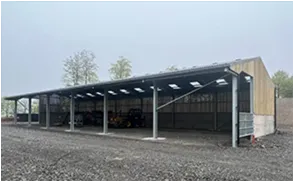- Afrikaans
- Albanian
- Amharic
- Arabic
- Armenian
- Azerbaijani
- Basque
- Belarusian
- Bengali
- Bosnian
- Bulgarian
- Catalan
- Cebuano
- Corsican
- Croatian
- Czech
- Danish
- Dutch
- English
- Esperanto
- Estonian
- Finnish
- French
- Frisian
- Galician
- Georgian
- German
- Greek
- Gujarati
- Haitian Creole
- hausa
- hawaiian
- Hebrew
- Hindi
- Miao
- Hungarian
- Icelandic
- igbo
- Indonesian
- irish
- Italian
- Japanese
- Javanese
- Kannada
- kazakh
- Khmer
- Rwandese
- Korean
- Kurdish
- Kyrgyz
- Lao
- Latin
- Latvian
- Lithuanian
- Luxembourgish
- Macedonian
- Malgashi
- Malay
- Malayalam
- Maltese
- Maori
- Marathi
- Mongolian
- Myanmar
- Nepali
- Norwegian
- Norwegian
- Occitan
- Pashto
- Persian
- Polish
- Portuguese
- Punjabi
- Romanian
- Russian
- Samoan
- Scottish Gaelic
- Serbian
- Sesotho
- Shona
- Sindhi
- Sinhala
- Slovak
- Slovenian
- Somali
- Spanish
- Sundanese
- Swahili
- Swedish
- Tagalog
- Tajik
- Tamil
- Tatar
- Telugu
- Thai
- Turkish
- Turkmen
- Ukrainian
- Urdu
- Uighur
- Uzbek
- Vietnamese
- Welsh
- Bantu
- Yiddish
- Yoruba
- Zulu
Nov . 04, 2024 21:54 Back to list
The Rise of Prefabricated Industrial Buildings
In recent years, the construction industry has witnessed a transformative shift towards prefabrication, particularly within the realm of industrial buildings. Prefabricated or prefab industrial structures are pre-manufactured in sections or modules at a factory and then transported to the construction site for assembly. This innovative approach is gaining traction due to its numerous advantages, including cost-effectiveness, efficiency, flexibility, and sustainability.
Cost-Effectiveness
One of the most compelling reasons for the growing popularity of prefab industrial buildings is their cost-effectiveness. Traditional construction methods often involve numerous variables leading to unexpected costs, including labor, materials, and time overruns. Prefabrication minimizes these uncertainties as the majority of the work occurs in a controlled factory environment. This allows for better quality control and reduced waste, which significantly lowers overall project costs.
Moreover, prefab buildings can be constructed faster than traditional structures. The simultaneous preparation of site foundations while the building components are being fabricated can significantly cut down the total construction time. Faster completion means that businesses can start operations sooner, thus maximizing their return on investment.
Efficiency and Speed
The speed of construction is a crucial factor for many industries. In sectors where time is money, the ability to erect buildings quickly can provide a significant competitive advantage. Prefabricated industrial buildings can be assembled within a fraction of the time taken by conventional methods, often reducing the overall construction timeline by 30% or more.
Additionally, standardization in design and manufacturing allows for precision in building components, minimizing on-site errors and the need for rework. This efficiency not only speeds up the construction process but also enhances safety on job sites. With fewer workers needed on-site at any given time, the potential for accidents decreases.
Flexibility and Customization
Another attractive feature of prefab industrial buildings is their inherent flexibility. These structures can be designed and modified to suit a wide variety of purposes, from warehouses and distribution centers to manufacturing plants and research facilities. Manufacturers can create custom designs that fit their operational needs, ensuring that the building serves their business effectively.
prefab industrial buildings

Furthermore, prefab buildings can be expanded or reconfigured with relative ease to accommodate future growth or changes in technology. This adaptability makes them an ideal choice for industries that anticipate rapid changes or scaling.
Sustainability
As environmental concerns continue to shape industries worldwide, the construction sector is under pressure to adopt more sustainable practices. Prefabricated buildings often boast a lower carbon footprint compared to traditional construction methods. By utilizing materials more efficiently and reducing waste through factory-controlled processes, prefab construction supports sustainable development.
Additionally, many manufacturers of prefab buildings prioritize eco-friendly materials and renewable resources. Buildings can be designed for energy efficiency, integrating features such as solar panels and energy-efficient insulation systems. This commitment to sustainability not only benefits the planet but can also result in long-term cost savings for businesses through reduced energy consumption.
Meeting Modern Industrial Needs
The modern industrial landscape is rapidly evolving, driven by advancements in technology and changes in market demand. Prefabricated industrial buildings align well with these emerging needs, integrating advanced technologies such as smart systems for monitoring and efficiency. The combination of prefabrication with modern automation and robotics can lead to more streamlined operations within the industrial sector.
Moreover, the current global supply chain issues have led many businesses to reconsider their operational strategies. Prefab buildings offer a viable solution, allowing manufacturers to quickly set up operations in different locations without the extensive lead times associated with traditional construction.
Conclusion
In conclusion, prefabricated industrial buildings present a compelling option for businesses seeking to build, expand, or adapt to the evolving industrial landscape. With advantages that span cost savings, efficiency, customization, and sustainability, prefab structures are not just a trend but a forward-thinking approach to construction. As industries continue to seek innovative solutions to meet their operational needs, the popularity of prefab buildings is likely to grow, reshaping the future of industrial construction. Embracing this modern methodology can lead to significant benefits, driving economic growth while responding to the pressing needs of our environment.
-
How Do Prefabricated Steel Structures Transform Modern Construction?
NewsJul.14,2025
-
How Do Prefabricated Metal Buildings Redefine Modern Construction?
NewsJul.14,2025
-
How Do Prefab Insulated Metal Buildings and Steel Structures Revolutionize Modern Construction?
NewsJul.14,2025
-
How Do Pre - Engineered Steel Structures Redefine Modern Construction?
NewsJul.14,2025
-
Advancing Modular Construction with Prefabricated Metal Structures
NewsJul.14,2025
-
Advancing Industrial Infrastructure with Prefabricated Steel Solutions
NewsJul.14,2025
Products categories
Our Latest News
We have a professional design team and an excellent production and construction team.












